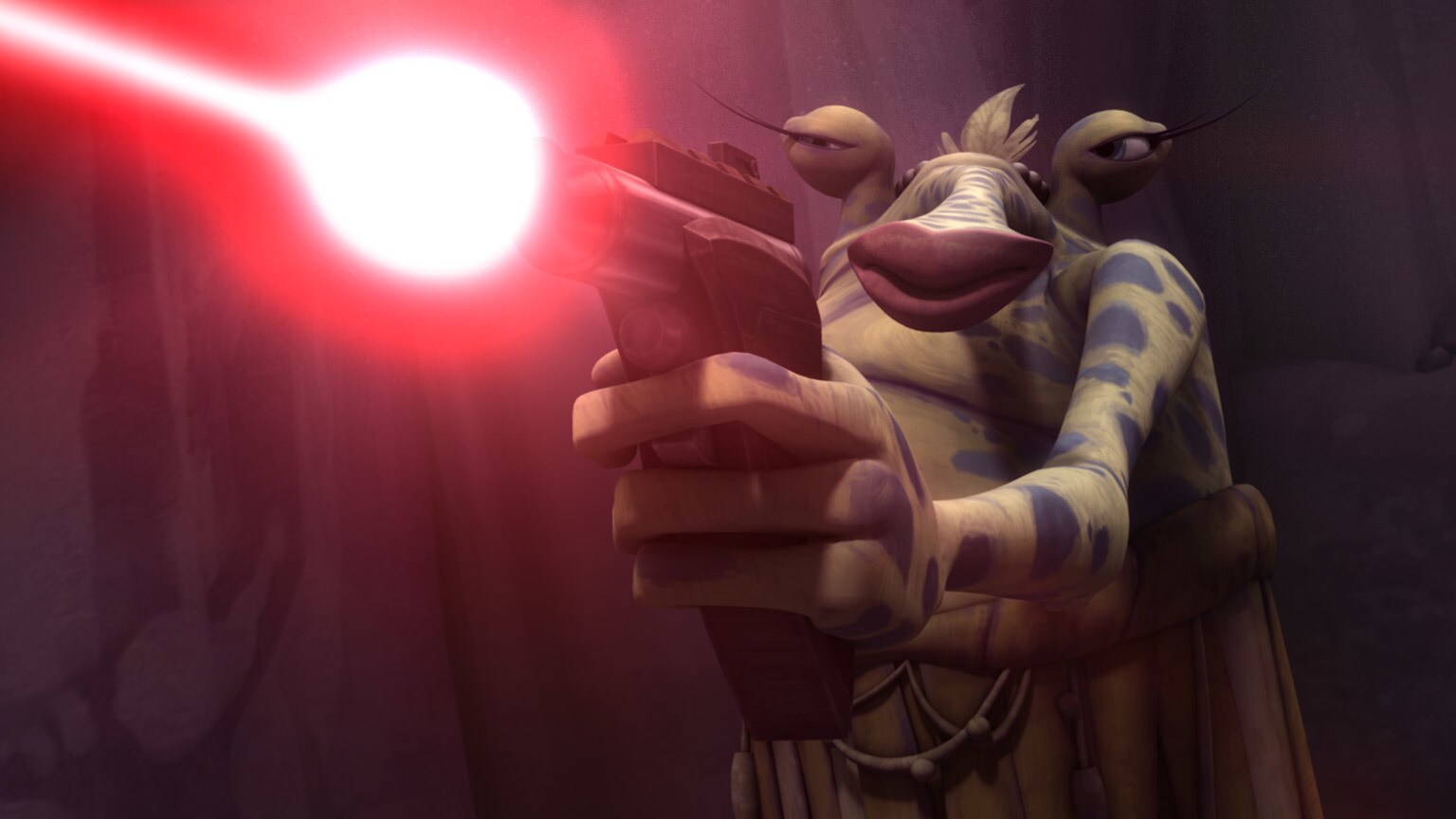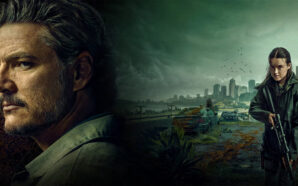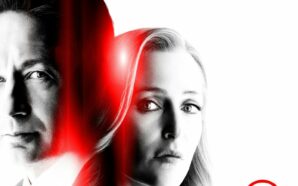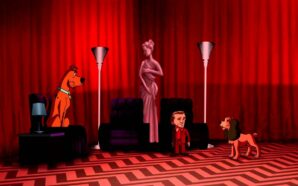Of all the adjectives that can be applied to Star Wars, “weird” might be my favourite. Yeah, the franchise can do taut, serious political thrillers like Andor, and huge sci-fi action in the core saga films, but I love when Star Wars just gets weird. Whether metaphysical or philosophical odysseys through the force or just a “hey, that alien has a funny-shaped head,” strangeness is a vital part of the mix. If the animated series The Clone Wars is an amalgamation of everything Star Wars can be – every tone, style, and genre – then one three-episode arc encapsulates this better than any other. A trilogy of episodes that offers everything you could possibly want from Star Wars, and probably some that you don’t.
The arc is so weird and varied, despite being one ongoing storyline, that I don’t know what to refer to it as. The Mortis arc may be strange but at least you can refer to it as ‘the Mortis arc’ and people know what you mean. This arc is the one where Cad Bane breaks Ziro the Hutt out of prison, to keep it to its most simple, and do it a massive injustice by doing so.
The first weird thing is how the story was told. It follows a microcosmic version of the saga trilogy release strategy: original, then prequel, then sequel. Lucas liked the season 1 finale so much that he decided to make a prequel and a sequel to it, both of which aired consecutively in the third season. The release order of the show is a mess but usually it’s no big deal. A dead character may suddenly be back in a few weeks, indicating the latter episode occurs before the former. But here the storyline continues over these episodes, an arc totally out of order, and on my first watch, in release order, I was baffled. The arc only makes sense, and only identifiable as a true arc, when watched in timeline order. I do recommend doing so for new viewers, even though it is a big ask to have viewers use an online guide. Disney+ really needs to introduce a chronology button that shuffles the episodes into chronological order.
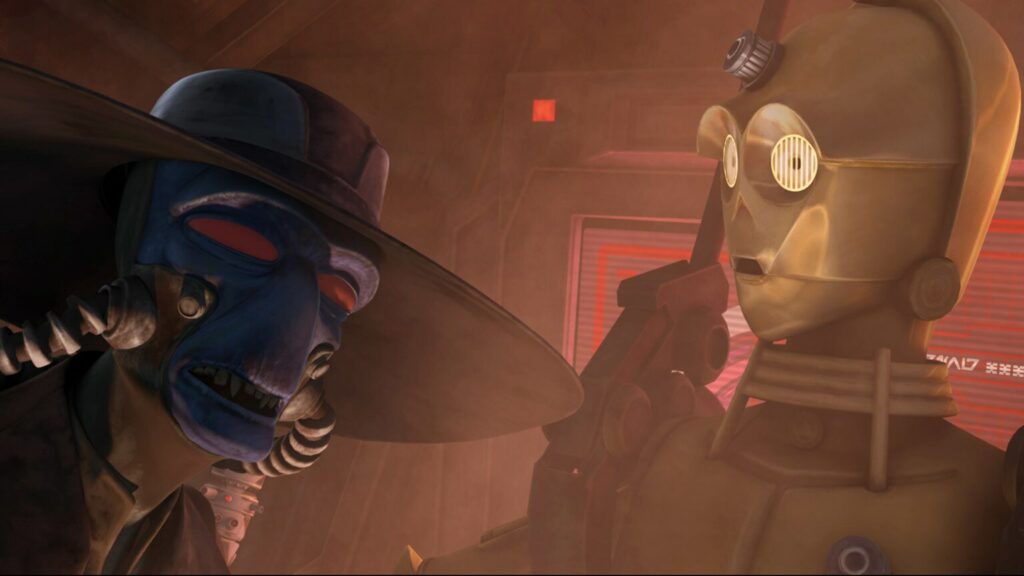
The arc begins, chronologically that is, with the eighth episode of season 3, Evil Plans. What will open up into a much bigger, darker trilogy starts with a silly little droid-focused episode. C-3PO and R2-D2 have to hunt for Jogan fruit at a Coruscanti market so Padme’s senator friend will have something to eat at a dinner party. It’s a light-hearted, kid-friendly adventure that embraces the classic comedy influence of the characters. The Three(pio) Stooges, if you will. Edgy viewers will no doubt balk at this, wanting to get back to the serious war drama, but I have time for these stories.
Then it all changes. Bounty hunter Cad Bane suddenly appears, kidnaps C-3PO, and tortures him to gain information on the senate. Yes, tortures! What was a fun, flippant side story suddenly goes shockingly dark. The tone flipped entirely before flipping back. Threepio’s torture is intercut with Artoo visiting a droid spa and having a whale of a time. The contrast is insane. The tone and pacing of the spa sequence was also apparently inspired by Wes Anderson’s The Life Aquatic with Steve Zissou, making the whole enterprise feel even more bizarre. We also get a rare, fascinating tease of Threepio’s life before being rebuilt by Anakin when he says he used to work for the chief negotiator of the Manakron system.
Next up, the middle instalment of the trilogy is the first season finale Hostage Crisis. How do you follow up a droid comedy/brutal torture episode? With Die Hard, of course. With vital info from C-3PO’s data banks secure, Cad Bane launches an assault on the senate, holding senators hostage so Palpatine will release Ziro the Hutt from prison. Anakin is trapped in the building with the baddies, unbeknownst to them, and begins taking them out one-by-one while trying to stay hidden. He doesn’t have his weapon because he’s given it to Padme as a symbol of his commitment (bit weird but when has their relationship not been.) It’s actually a good Padme/Anakin episode and builds their rapport much better than the movies ever did.
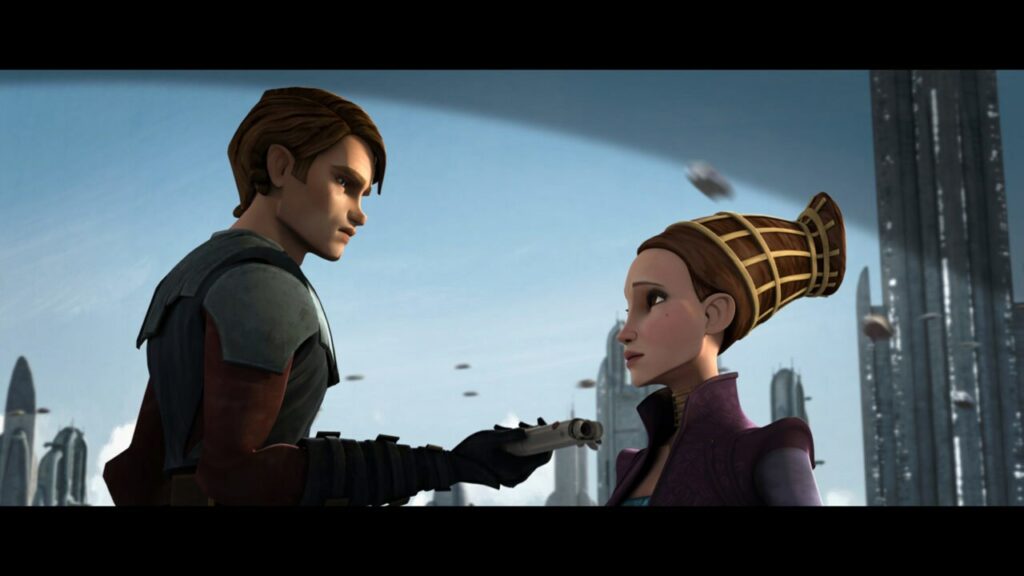
It’s also a brutally violent episode. The first season is skewed more towards younger kids but the finale is a statement on where this show is heading in regards to violence and subject matter. A watershed moment for the series. Cad Bane breaks necks and Aurra Sing – an underutilised character I love – executes unarmed guards without hesitation. It’s also an episode where the bad guys win. Bane’s plot works and Ziro escapes custody.
Hostage Crisis is the first Cad Bane episode. Not chronologically but in air order. Most viewers would be introduced to the character through this episode and it’s a great debut. Not only is he that specific brand of Star Wars cool but his fan favourite status was no doubt helped because he was shown to be a villain who could succeed, unlike Grievous throughout the first season.
To make the arc even more nuts, season seven retconned an event to occur here, nestled between the second and third instalments. An unseen chase takes place after the credits roll on Hostage Crisis where Cad Bane shoots down a cargo transport. The Jedi redirect it into a less populated area, killing fewer civilians than if they left it on its course. Essentially, ‘the trolley problem’ in Star Wars. Trace and Rafa’s parents are among those killed. It’s a defining part of the backstory of these petty criminal/proto rebel sisters who appear in two shows, Clone Wars and Bad Batch, and I wouldn’t be surprised at more appearances in the future. Of all the ways to write Jedi involvement into these deaths, the writers chose the arc already peppered with an insane number of wild ideas.
The trilogy then concludes with the ninth episode of season 3, Hunt for Ziro. Even without the other two episodes feeding into it, this would be a crazy episode. Obi-Wan and Quinlan Vos, in his only Clone Wars appearance, team up to hunt down Cad Bane and Ziro the Hutt. It’s a fun buddy cop dynamic, with Obi-Wan exasperated at Quinlan’s laidback attitude, which takes the form of quotes from The Big Lebowski. I’m not even kidding. There’s such a wide range of influences and vibes in this episode.
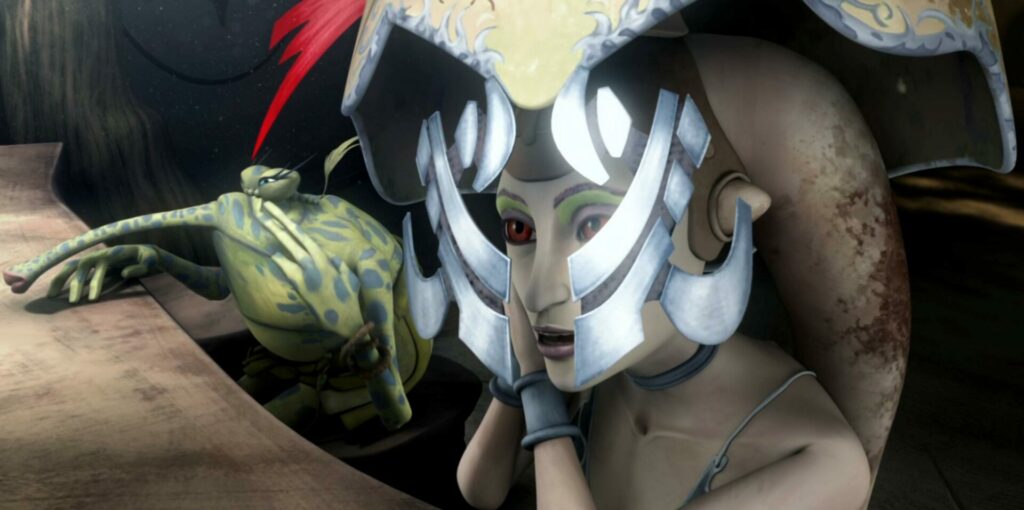
The 80’s buddy cop adventure gives way to a classic noir thriller when Sy Snootles of all characters aids and then betrays Ziro in the role of a femme fatale. Nal Hutta is portrayed as some Deep South bayou where everyone has southern accents, including Mama the Hutt. The Hutt Council suddenly turn the episode into The Godfather and then Sy performs the dance number from the start of Indiana Jones and the Temple of Doom. It’s funny and bizarre and all over the place in the best way possible before the episode ends with one of the most underrated action sequences of the franchise, coming out of nowhere, as Cad Bane fights Kenobi and Vos at the same time.
I want to make something clear: this isn’t me condemning the creative choices this arc makes. I’m baffled, yes, but I love these three episodes. I love how weird they are. It’s an arc that acts as a sequel to The Clone Wars movie that kicked off the series in fairly lame fashion. In fact, it feels like it was written to remove the elements that didn’t work, like Ziro, but the writers used that opportunity to branch out and test so many other elements of Star Wars to see what would work in the series.
Each episode of this trilogy is wildly different. Different genres, locations, and protagonists. Tonal changes scene-by-scene. Such a huge range of influences are on display, from classic comedy double acts, 80’s action movies, gangster movies, Indiana Jones, the Coen Brothers, Wes Anderson, and a whole lot more. From pastiche to parody to loving embrace, all Star Wars-ified just enough to fit, with heaps of world building found throughout. It’s a little messy and a lot all over the place but brilliant at the same time. The creative freedom of The Clone Wars is bursting from all three of these episodes. There may be stranger scenes, ideas, and episodes across the animated shows but no arc or trilogy contains the sheer number of them that this one does. It all coalesces into the weirdest Star Wars trilogy ever.




